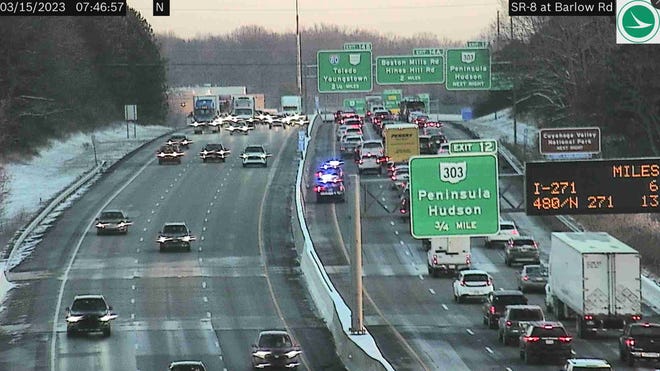What you need to know about Ohio's $13.5B transportation budget plan
Electric vehicle owners to get break on Ohio registration fees.
 Laura A. Bischoff
Laura A. Bischoff
State lawmakers are expected to give final approval to a $13.5 billion transportation spending bill on Wednesday, after the House and Senate hammered out compromises on key sticking points.
The bill will give the city of Cincinnati the go-ahead to sell its railroad line. Cincinnati leaders hope to sell the railroad to Norfolk Southern. City voters would have to approve the sale no later than November 2024 and mention Norfolk Southern in the ballot language, according to House Finance Chairman Jay Edwards, R-Nelsonville.
Here's an overview of what else the bill would do:
- Allocate $2.2 billion for pavement projects and $717 million for bridges.
- Allocate $3 billion in federal and state money for Cincinnati's Brent Spence Corridor project.
- Require the Public Utilities Commission of Ohio, which regulates trains, to create a report on Ohio's transportation of hazardous materials and waste.
- Require freight trains to have two-person crews for safety.
- Allow the Ohio Rail Development Commission or its designees "to construct and operate an intercity conventional or high-speed passenger transportation system."
- More than double the monetary threshold for when counties can do road and bridge repairs. Currently projects above the threshold must be done by private contractors.
- Restrict counties and townships to using handheld devices for traffic enforcement cameras.
A plan to earmark $1 billion for rural highway projects was removed from the bill and lawmakers agreed to work on it later this year.
Will gas taxes and fees go up?
No. The state gas tax remains 38.5 cents per gallon of gasoline and 47 cents per gallon of diesel and there are no bumps in fees paid for things like driver licenses or vehicle plates. The last gas tax hike came in 2019.
The bill calls for reducing the registration fee for a plug-in hybrid vehicle from $200 to $150 on January 1, 2024.
Are speed limits changing?
No. A Gov. Mike DeWine said he opposed increasing speed limits, lawmakers nixed it.
That proposal called for increasing speed limits on highways outside of cities and villages from 55 mph to 60 mph and permitting some two-lane routes to increase from 60 mph to 65 mph after an Ohio Department of Transportation study.
Ohio's new distracted driving law won't change
Efforts to beef up Ohio's new distracted driving law fell short. The new law, which takes effect on April 4, makes it a primary offense for adult drivers to do things like text, check social media or stream movies while driving.
It's already illegal to do those things but police can only pull the adult driver over if they witness another traffic violation, such as speeding or swerving.
The new law allows drivers to make calls as long as the phone is held up to their ear or they're using hands-free technology. It also allows people to text or look at their phones while stopped at a light. Safety advocates unsuccessfully pushed for eliminating those provisions.